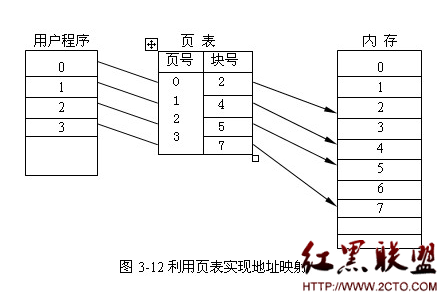带头结点的单链表【链表问题】
带头结点的单链表【链表问题】。
/* * 带头结点的单链表 */ public class SinglyList{ public Node head; // 创建头结点 /* * 构造函数1,只有一个头结点 */ public SinglyList() { this.head = new Node (); } /* * 构造函数2,依次将values中的值填入单链表中 */ public SinglyList(T[] values) { this(); // 构造一个空的单链表 Node rear = this.head; // 为空的单链表设置头结点 for (int i = 0; i < values.length; i++) { rear.next = new Node (values[i], null); // 尾插入节点 rear = rear.next; // 尾指针指向尾节点 } } /* * 判断单链表是否为空,O(1) */ public boolean IsEmpty() { return this.head.next == null; // 因为这是带头结点的单链表,所以判断为空的条件是头结点以后为空 } /* * 得到单链表第i个节点的值,并返回 */ public T get(int i) { Node cur = this.head.next; // 用cur指向当其节点 for (int j = 0; cur != null && j < i; j++) { // 这里一定要注意,i是不能越界的(这里是指大于链表长度),很多新手都不注意这里,容易出错 cur = cur.next; } return (i >= 0 && cur != null) ? cur.data : null; // 这里也设置了越界保险,当i(小于零,或者链表为空)都要返回空,否则返回对应元素 } public void set(int i, T x) { } /* * 求链表长度,复杂度为O(1) */ public int size() { int length = 1; // 头结点算是第一个节点 Node p = head.next; while (p != null) { length++; p = p.next; } return length; } /* * 将单链表制作成字符串形式,然后返回,这个方法,在测试的时候,非常有用 */ public String toString() { String str = this.getClass().getName() + "("; // 返回类名 for (Node p = this.head.next; p != null; p = p.next) { // 遍历单链表 str += p.data.toString(); if (p.next != null) str += ","; // 不到最后结点,要用分隔号隔开 } return str + ")"; // 返回 } /* * 在指定位置进行插入,将x插入到第i个元素之后(这里第一个元素是指head),插入后x的序号为i(因为从0开始的) */ public Node insert(int i, T x) { if (x == null) throw new NullPointerException("x==null"); // 如果要插入的元素为空,则抛出空异常 Node front = this.head; for (int j = 0; front.next != null && j < i; j++) // 寻找到第i个节点 front = front.next; front.next = new Node (x, front.next); // 将x节点设为front之后 // 一开始我很不习惯直接用这种方式(直接新建一个然后赋值),我一般是新建一个插入节点 // 然后再赋值给front.next,但是后来发现上面这种方法更好,省去了起名字的麻烦,而且形式也很简单 return front.next; // 返回插入结点 } /* * 插入操作,默认插入到最后一位 直接调用上一个插入方法, 因为上面插入方法中,有容错机制,当你的i大于链表长度时,它就默认在末尾插入 * 下面这个方法,显然就利用了这一点 */ public Node insert(T x) { return insert(Integer.MAX_VALUE, x); } /* * 删除第i位结点 */ public T remove(int i) { Node front = this.head; for (int j = 0; front.next != null && j < i; j++) front = front.next; // 遍历并找到第i位元素,或者是最后一位(当i大于链表长度时) if (i >= 0 && front.next != null) { // 确认i的合法性,如果i小于0,会跳过上面的for语句 T old = front.next.data; front.next = front.next.next; // 删除操作 return old; } return null; // 如果没有执行上面的if语句,说明i小于0,或者大于链表长度,前者错误,后者不用删除 } /* * 根据关键字进行删除 */ public T remove(T key) { Node p = this.head; if (head.data == key) { head = head.next; return key; } while (!p.next.data.equals(key) && p.next.next != null) { p = p.next; } if (p.next.data.equals(key)) { p.next = p.next.next; return key; } return null; } /* * 清空链表 */ public void clear() { this.head.next = null; } public static void main(String[] args) { // TODO Auto-generated method stub String[] s = { "aa", "bb", "cc" }; SinglyList test = new SinglyList (s); test.remove("aa"); System.out.println(test.toString()); } }
1、对于上面的在第i个元素之后插入的方法,测试一下:
String[] s = { "aa", "bb", "cc" };
SinglyList test = new SinglyList(s);
test.insert(2, "ee");
System.out.println(test.toString());
显示结果如下:

ee插入到了第2个元素之后,但是如果是按序号来算的话,那么它就是2号(因为第一位是0号)
2、测试上面的移除操作
String[] s = { "aa", "bb", "cc" };
SinglyList test = new SinglyList(s);
test.remove(1);
System.out.println(test.toString());
结果显示:

删除了“bb”,这里的i是序号,不是个数(如果算上头结点的话)
相关文章
图文推荐
- 文章
- 推荐
- 热门新闻



